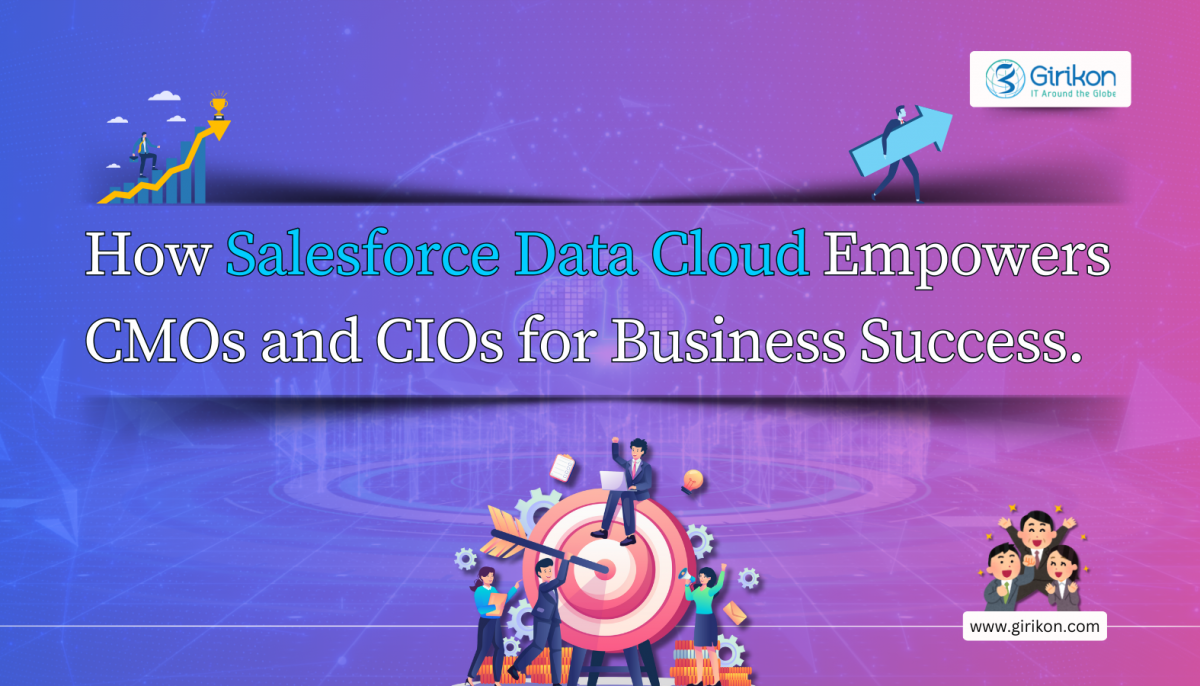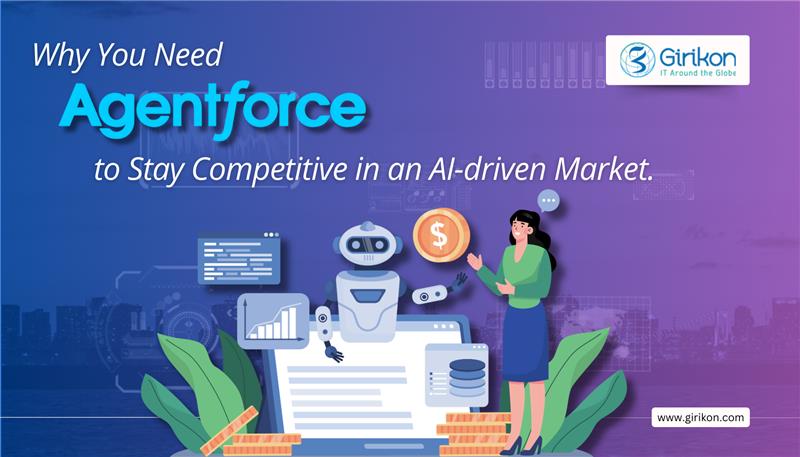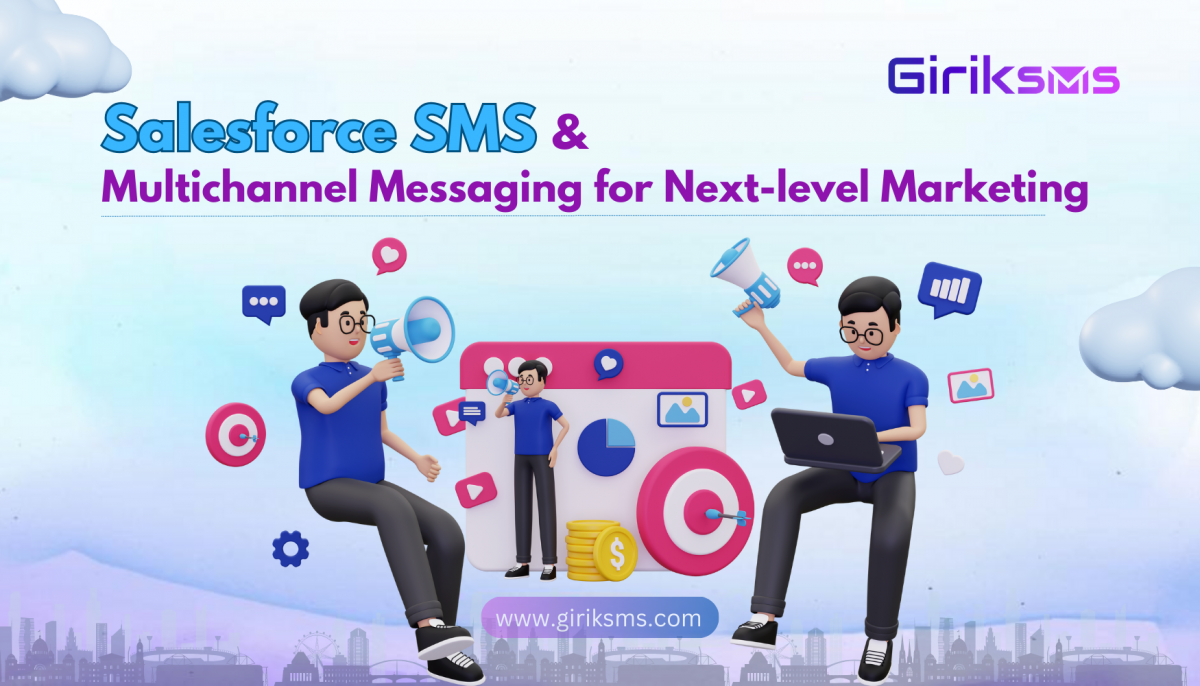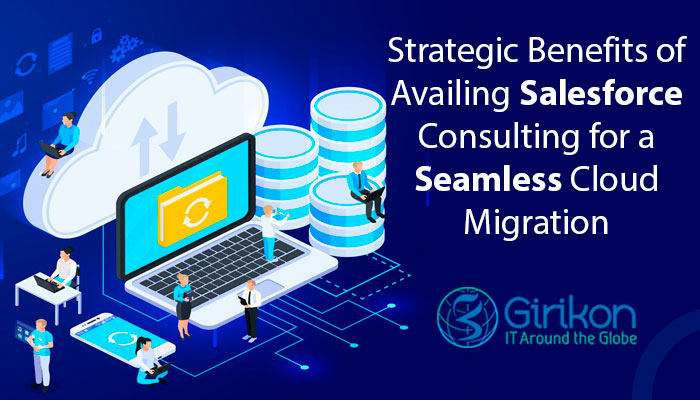In today’s competitive era, businesses must consider integrating and synchronizing products, their pricing, inventory, and other business details to fulfill the evolving needs of modern consumers. To meet these demands, businesses require robust tools such as Salesforce Commerce Cloud and MuleSoft. You can seek Salesforce support from a reliable service provider to know more about these platforms.
The integration of MuleSoft and Salesforce Commerce Cloud ensures a connected commerce experience and allows organizations to unify commerce data from any system, and quickly launch into new markets while providing enterprise-grade security to ensure the safety and security of corporate data. In other words, MuleSoft and Salesforce Commerce Cloud can provide a connected commerce experience.
What is Salesforce Commerce Cloud?
Salesforce Commerce Cloud is an e-commerce solution that empowers organizations to sell their products and services across different channels, including social, mobile, and the web. This cloud platform helps retailers provide a superior shopping experience to their customers.
This platform provides brands the agility to remain competitive and ensure the following:
Proficiently launch and manage stores across different channels, geographies, and dialects through a cloud-based commerce platform.
Test and deliver changes.
Modernize while prioritizing actionable insights that drive better business decisions.
Salesforce Commerce Cloud Is Only as Powerful as the Data That Lies Behind It
With Salesforce Commerce Cloud, businesses can take the online shopping experience a notch higher than that of a traditional e-commerce platform by capturing customer data. In fact, this innovative platform has transformed the way organizations conduct their business by launching into new markets faster while ensuring security from threats.
This is possible through API-led connectivity that amalgamates crucial data from legacy systems, CRM, ERP, and partners like delivery logistics providers. However, digital transformation via API-led connectivity depends significantly on the data that backs it. This is where Salesforce Commerce backed up by MuleSoft comes into the picture as it connects all the commerce systems and creates a steady customer view across the organization. MuleSoft’s Anypoint Platform allows you to centralize data while creating an omnichannel experience.
Since customer data is an asset that can be leveraged by organizations to improve customer service by using digital technologies and integrating data while making it accessible in real-time. Real-time data ensures quicker customer support and increased satisfaction.
APIs help in integrating different systems together and creating a data-driven model. This ensures precise decision-making. In addition, such an approach to data provides insights by tracking customer engagement patterns and gathering more data. By integrating customer data with Salesforce Commerce Cloud, you can get a comprehensive view of your customers while furthering your brand loyalty by having all customer data gathered in a single solution.
What is MuleSoft?
MuleSoft is a reputed provider of Enterprise Integration Platforms. MuleSoft connects all the data, applications, and devices across different business entities. They enable organizations to gather their data in real-time, actionable, and secure information.
MuleSoft along with its Anypoint Platform is one of the best integration platforms available and allows businesses to connect with different applications while ensuring system-to-system integrations are easy and cost-effective. Additionally, the platform provides a unified platform to help organizations manage their business process activities to enable efficient connectivity across people, devices, and systems.
MuleSoft has put an end to point-to-point legacy integrations that hinder digital transformation.
The Influence of MuleSoft and Salesforce Commerce Cloud:
If the solutions that you are using currently do not allow you to tap into data from various sources, you're stuck inside one system. If you are willing to venture into new markets then it would consume more time and money. The right solution would be to combine your requirements in a single system, which is possible with Salesforce Commerce Cloud and Mule Soft which allows you to connect with other systems quickly.
To Wrap-up:
To succeed in today’s competitive era, businesses must create great customer experiences, which is possible by having ready access to customer data. However, brands are likely to stay behind if they fail to centralize their data. Salesforce and MuleSoft together are a perfect match as they both are dedicated to leveraging APIs and connectivity to help organizations succeed through digital transformation. To know more about the benefits of these platforms, it’s essential to get in touch with a certified Salesforce implementation partner.
Today, every industry is undergoing digital transformation. Today, forward-looking organizations are becoming future-proof by building their businesses on the foundation of API-led connectivity. Alternatively, organizations that lack APIs are finding it difficult to keep pace in the digital age. In other words, successful organizations are aware of the fact that the more they are associated with an ecosystem of applications, partners, developers, and customer experiences, the more will their APIs grow in value.
Today, as the API economy evolves, more and more organizations are collaborating with other members of the ecosystem to co-create API-based products. Such partnerships are not just mutually beneficial for those involved but also offer value to their combined customers. Consequently, organizations are expected to reimagine value creation by collaborating with their partners as they are endowed with customer-centric thinking. Such an ecosystem that offers value to every participant including the company that hosts the ecosystem, the developers, partners, and ultimately the customer offers a win-win situation.
While there is no dearth of advice regarding APIs on the World Wide Web, companies tend to feel confused with so much information at their disposal during their API journey. In such situations, they can avail MuleSoft consulting from a reputed service provider. Listed below are some best practices that can help organizations cultivate a thriving API ecosystem:
Begin with Customer Experiences: Irrespective of whether the end-user is your customer, developer, or an internal stakeholder, it’s important, to begin with defining the best possible customer experiences. This strategy which is known as ‘outside-in strategy’ depends on customer needs and preferences and takes into consideration developers, direct customers of API, and the end-users the developers serve. This approach requires the collective imagination of both IT and business teams to come up with next-gen customer experiences.
Get Hold of Ecosystem Principles: As organizations, today are using APIs as building blocks for creating an ecosystem and reusing the same in the API economy for future growth, they must follow the following ecosystem principles to unravel innovation:
Organizations should change their outlook of considering API as products and services, which acts as a hurdle to unlock new sources of revenue and allow developers, partners, and others at the door to co-create value.
As organizations develop API products, they should be ready to experiment, fail, and ultimately establish their API capabilities as the ecosystem evolves rather than getting bogged down with questions that might overwhelm them.
Apart from extensive experimentation, organizations should have a data-driven mindset and a pathway for management and operations. Leaders should size their investments for productivity, revenue, and customer experience to drive maximum value.
Define an API Business Model: It’s important to define a monetization approach for creating a sustainable API ecosystem. This approach can be created basis the value delivered by API and the data to different audiences. The API business models are of two types i.e. internal and external. For internal API products, organizations should assess their API investments that are centered on reduced operational expenses, legacy modernization, and improved efficiency. However, for external API products, organizations should contemplate business models that can open up new streams of revenue and new business opportunities.
Co-create Value by Engaging with Partners: Once organizations identify their customer experiences and outcomes, it’s important to reunite them against your company’s core competencies.
Design and Deliver API Products: Organizations should then decide on the API design followed by developing and securely deploying them using an API lifecycle management solution for a thriving API ecosystem. Effective API products can help drive a higher adoption rate. Developers can use already available resources to develop such APIs rather than spending time on building them from scratch.
API Consumption: For ensuring the success of their API investment, organizations should put efforts towards creating strategies that incorporate well-thought-out adoption campaigns accompanied by appropriate customer education and marketing. The API lifecycle management solution adopted by organizations should provide scope to engage their developers and partners in their branded experience.
Observe, Measure, Reiterate, and Reprise: Organizations should monitor their business metrics thoroughly while stay close with the members of the ecosystem to focus on achievements, spot glitches, bring forth opportunities, and repeat as required. They should contemplate making improvements by tracing errors, metrics in use, and other desired outcomes. Leaders should also complete the API portfolio, and take note of historical trends to assess which API’s to be promoted or retired.
Quick Wrap-up:
To design an effective API ecosystem, organizations should consider partnerships, redefined business models, and an enhanced pace of development. Organizations should establish a centralized model of governance to ensure efficient implementation of API strategies while monitoring the progress of the ecosystem, and finally measuring the effect of investment on the bottom line of the organization. So, whether you are looking to build an API ecosystem or already have one, it’s better to seek MuleSoft consulting services from a reliable service provider.
Today, customers have become more informed and aware of their rights, and responsibilities. Consequently, they are trying to connect with the brands they like via social, mobile, web, app, and in-person communications. Now, these interactions are driven by APIs (Application Programming Interfaces), which makes it essential for retailers to create and execute API strategies that can help them connect with their customers in new ways.
Listed below are some best practices, which retailers should keep in mind before creating their API strategies:
Prepare a Single Customer View: As businesses grow, it’s important to scale up the systems that are used to track your customers. This is important because data silos tend to get formed over a period of time due to the lack of proper synchronizations of these customer data sources. To retrieve data into a single view is not easy to achieve with legacy tools used by retailers. To bring these disparate systems together and get a single and complete view of your customers, retailers can now leverage MuleSoft – a robust integration tool. By integrating this tool, retailers can get insights, which can help them better know their customers. The API-led architecture of MuleSoft allows seamless integration of different systems, which can be utilized as a single tool. It’s good to partner with a MuleSoft consulting firm to know more about this integration platform.
Optimize the Supply Chain: MuleSoft can be leveraged by retailers to monitor their supply chain while drawing powerful insights about products, orders, and inventories. All the stakeholders including the sales team, customers, etc. can be provided with real-time information so that issues can be resolved even before they arise. The power of quick information relay will not just translate to better use of inventories but also do away with the loopholes of the traditional tools.
Develop Better Orchestration of Data: Apart from getting an omnichannel view of their customers, retailers can reuse the APIs and tools developed for drawing customer insights for creating a data source for reporting, auditing, and accounting needs. This reusability of MuleSoft tools and API’s results in quicker time to market, which ultimately improves the bottom line of their business.
Quick Wrap-up:
Retail organizations that have been around for some time still use legacy systems to solve their business challenges. However, these systems become inefficient and fail to support interoperability with new technologies as they age. While these issues can be resolved using point-to-point integrations between existing systems but they tend to complicate systems thereby making them prone to failure. MuleSoft’s Anypoint Platform not just helps retailers to enable seamless integration, as well as interoperability throughout the system but also provides the tools needed by retailers to design and develop APIs that developers wish to use. To know more about this platform, it’s prudent to avail MuleSoft consulting services from a reputed service provider.
Our Salesforce Consulting Team steps through a simple MuleSoft Integration
At Girikon, a Salesforce Consulting Company we believe Salesforce is the world’s no. 1 cloud platform based on CRM (Customer Relationship Management) capabilities. Early last year Salesforce agreed to acquire MuleSoft for a mutli-million-dollar cash and stock deal. MuleSoft, a software company that provides integration software for connecting applications, data and devices.
Girikon’s Salesforce Consultants specialise in many Salesforce products and after the announcement our consulting team gained certifications in MuleSoft. Girikon is commitment to keeping ahead of the pack with knowledge and certifications for leading technologies.
In this blog we are focusing on Salesforce integration with MuleSoft.
Firstly, we will need a Salesforce developer account by clicking on the following link:
https://developer.salesforce.com/signup.
Then a MuleSoft account by clicking the following link:
https://anypoint.mulesoft.com/login/signup.
In this first example we can send a couple of contact records to Salesforce with the help of MuleSoft. For this we have to download any point studio which is a MuleSoft IDE by clicking on this link https://www.mulesoft.com/lp/dl/studio.
We are going to use any point studio for this data transfer. First download the any point studio. Then extract the zip file in your directory and the click on the application to install it. After installation is finished click on the any point studio icon it will launch a wizard like shown in the figure below.
Fig: – Launch Wizard of Any point Studio
Click on the launch button after selecting the directory of your workspace. It will then open the any point studio as shown in the figure below.
Fig: – Any point Studio
Open the example project in Any point Studio from Any point Exchange by logging into your MuleSoft account.
Download Import Contacts into Salesforce application. Note: do not run the application.
Login to your Salesforce account.
In the left navigation bar, open My Settings under the Personal Setup heading, click to expand the My Personal Information.
Click Reset My Security Token. Salesforce resets the token and emails.
Open your mail account where the security token is sent and copy the token onto your local clipboard.
Now open your Any point Studio after downloading and opening the application it will look like as shown in the given fig.
Fig: – Any point Studio with application
In your application in Studio, click the Global Elements tab. Double-click the Salesforce SFDC config global element to open its Global Element Properties panel.
In the Security Token field, paste the Salesforce token that you copied from your mail.
Alternatively, configure the global element in the XML Editor.
Change the contents of the Username and Password fields to your account-specific values, then click OK to save your changes.
This application project includes a sample CSV file, contacts.csv, that you can use to view the end-to-end functionality of this application. The CSV file will look like this.
Fig: – contacts.csv
In the Package Explorer, click the src/main/resources folder to expand it, then find the contacts.csv file inside this folder. Double-click the File config tab in the Global Elements tab and set the Working Directory field to point to the src/main/resources folder. In the Package Explorer, right-click the import-contacts-into-salesforce project, then select Run As > Mule Application.
Studio runs the application on the embedded server. After the application runs successfully it will create two contacts records in salesforce which the csv file contains. Open your salesforce account, then navigate to the Contacts tab. It will show you two new entries: John Doe and Jane Doe.
Fig: – Two new contacts created
About Girikon
Are you looking for a Salesforce Integration expert? At Girikon it is where the search ends. Girikon is a Salesforce Consulting Partner and has the required set of tools, skilled resources and technical knowledge to understand the platforms an organisation uses and transforms your existing systems to a truly interoperable solution.
Girikon’s Certified Salesforce Consultants understand the rapid increase of mobile, cloud and social platforms. They are here to assist customers who are left to their own devices to develop a solution for their organisation. Girikon Salesforce Consulting Services team made up of Architects, Developers, Business Analysts, QA experts have the required knowledge and are certified to design and delivery integrations to suit your needs.
Our Service team are cost-effective, and our Consultants will develop a strategy to bring together a quality solution which can be across multiple applications and technology platforms such as Salesforce, Microsoft, Oracle, Abode, SAP etc.
We certainly are lucky to be living in interesting times. Times, when the human race and its ways of living and interacting are constantly evolving in all areas. Disruption and evolution seem to have become the two faces of the same coin.
While this discussion can cover n number of facets, let us focus the current scope on IT and how the convergence of several digital forces, mobile, SaaS, cloud, big data, IoT and social, are constantly disrupting markets. The effect of this is that the IT Industry is constantly having to evolve and adapt at faster speeds to live up to the expectations of the market. This is what is being termed as Enterprise Darwinism. In an an era where one must evolve to deliver customer success or die, Enterprise Darwinism or Digital Darwinism refers to the steps taken by enterprises to adapt to the external changes, adopt the right processes, start to think & operate differently in order to be able to scale up to be capable of meeting the challenges of digital transformations.
The digital competition along with advent of cloud and mobile has brought about a break down in the traditional IT operating model. IT is now more of an enabler for the business, providing support and training, as required to help the business consume available capabilities to build their own solutions, better suited to their needs.
In such an ecosystem, APIs will be key assets that IT teams will build for developers across the organization to use to build new apps, services, and processes. The demand will be for streamlined networks that use APIs to connect the company’s applications, data, and devices. These networks will be the backbones, providing right & fast information & connectivity, across the enterprise. This is what will help enterprises innovate faster, adapt better, create better customer experiences, and eventually get ahead of all competition.
This is exactly where MuleSoft comes into the picture. MuleSoft helps build application networks: seamless frameworks of applications, data sources, and devices connected by APIs, whether on-premises or in the cloud.
Mulesoft provides various APIs, connectors and models of middleware to centralize and standardize integration practices across an entire infrastructure. It provides a software platform that connects nearly every technology in a standardized way.
What is achieved using Mulesoft:
Mulesoft unlocks data using APIs and connecting it to external systems and applications
It enables to manage and secure the flow of data between all systems in the enterprise
Availability of self-serve existing APIs helps teams innovate faster
Developers across the organization can leverage existing APIs to create new processes and experiences
In a Nutshell, Mulesoft can become one of the critical tool to help adapt and evolve faster. As Darwin stated, “It is not the strongest of the species that survives, nor the most intelligent, but the one most responsive to change.” If enterprise Integration is what can give your business the leading edge, Mulesoft is what can help you achieve it.
In case you need Expert Salesforce Consulting Team for any Salesforce related work, then please feel free to reach out to sales@girikon.com

 +1-480-382-1320
+1-480-382-1320 +44-7428758945
+44-7428758945 +61-1300-332-888
+61-1300-332-888 +91 9811400594
+91 9811400594


















